Sydney beaches allowed to reopen after tar balls testing
Good news for beachgoers as experts reveal the next step in determining if thousands of mysterious black balls that have washed up ashore are safe.
Environment
Don't miss out on the headlines from Environment. Followed categories will be added to My News.
Sydney beaches are safe to reopen after testing of the mysterious black balls that washed ashore proved the bizarre items were not highly toxic to humans.
University of NSW scientists conducted preliminary tests, finding the balls contain bituminous materials, and some biological matter like fatty acids.
Despite the extensive removal of thousands of balls, NSW Maritime executive director Mark Hutchings urged the community to remain vigilant if heading to the beach this weekend.
“Based on advice from the EPA, we can now confirm the balls are made up of fatty acids, chemicals consistent with those found in cleaning and cosmetic products, mixed with some fuel oil,” Mr Hutchings said.
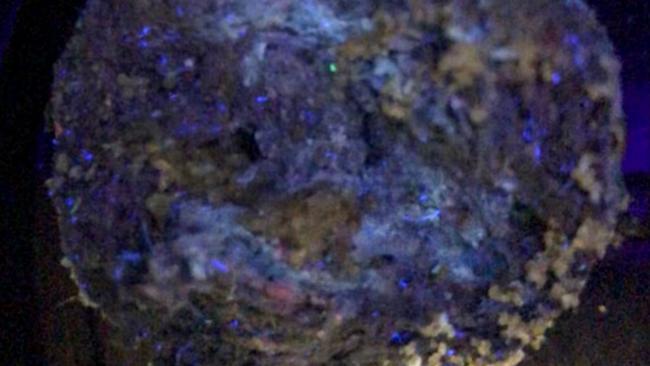
“They are not harmful when on the ground, but should not be touched or picked up.
“We’re expecting to see thousands of people head to our beaches this weekend as the rain starts to clear.
“If you see these balls, report them to a lifeguard.
“If you or your family accidentally touches one, wash your hands with soap and water or baby oil.”
NSW EPA executive director Stephen Beaman said investigations were continuing to determine where the balls originated from.
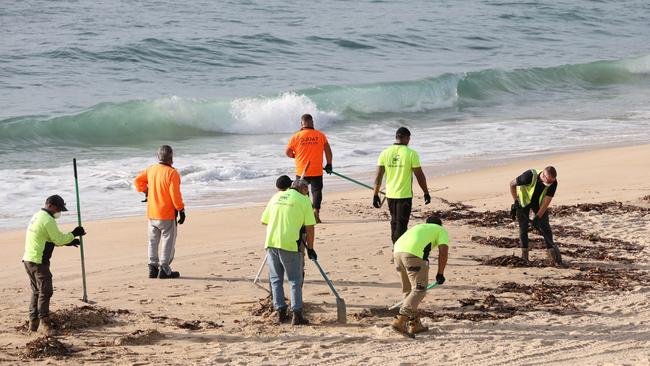
“Until we finalise all our test results, we are unable to clearly state where they came from and any environmental impacts – it is still somewhat of a mystery and may take a few more days to determine origin.
“We remind anyone who finds these balls, especially in new locations not already identified, that they should be reported to the Environment Line on 131 555.”
Ms Beaman said people should check with their local councils to determine whether the beaches are open or not.
It comes as seven Sydney beaches were closed to the public as the black tar balls wash up along the shore.
There were 2000 “unusual” spheres were first discovered along Coogee Beach on Tuesday, prompting Randwick City Council to immediately shut the beach while testing was conducted.
Since then Gordons Bay, Clovelly Beach and Maroubra Beach have been closed to the public after tar balls also washed ashore.
Bondi, Tamarama and Bronte beaches were also closed “out of precaution”, Waverley council said.
With less than 150 balls still at some beaches, Mr Hutchings said a multi-agency coordinated approach would continue investigate the bizarre items.
“We’ve had teams on the ground, vessels out on the water, and drones in the sky to clear majority of the balls from our beaches,” he said.
“We’ve found no further evidence of the substance, so this appears to be an isolated incident.
“We’ll continue to monitor the situation, but at this stage NSW Maritime is downgrading the risk and recommending to councils that beaches can be open.”
Councils have the final authority on whether to reopen the beaches or not.
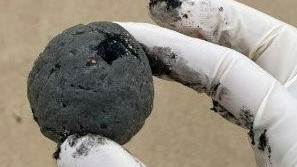
UNSW chemist Alex Donald said the findings confirmed the tar balls originated from weathered oil.
“It is still unclear whether they resulted from natural seepage or a crude oil spill,” he said.
“Further chemical analysis is needed to pinpoint the source.”
The researchers also put the balls under UV radiation.
Specks of the balls are fluorescent, indicating organic compounds.
The tar balls “likely originated from petroleum-based sources”.
“Whether caused by human activity or natural processes, solving the mystery of these sticky invaders requires ongoing scientific inquiry.”
“The source could be linked to oil spills, petrochemical processes, or environmental pollution involving hydrocarbons,” Professor Donald said.
The fluorescence points to marine algae becoming attached.
Similar balls show up on Californian coasts from oil seeping out of the seafloor. Golden Beach in Queensland and Ninety Mile Beach in Gippsland have seen similar blobs, after oil spills or shipping discharges.
Professor Donald said figuring out whether the tar balls came from a spill or naturally from the seafloor was important in shaping the correct environmental response.
An industrial spill could spark legal action, and requires an immediate cleanup.
“The toxic compounds in tar balls can leach into the water, posing long-term threats to marine biodiversity,” he said.
“The appearance of tar balls on beaches such as Coogee not only damages Australia’s pristine coastal reputation but also threatens the health of ecosystems that support industries like fishing and tourism.”
The six UNSW scientists will continue to analyse the balls, being given samples by the Randwick City Council.
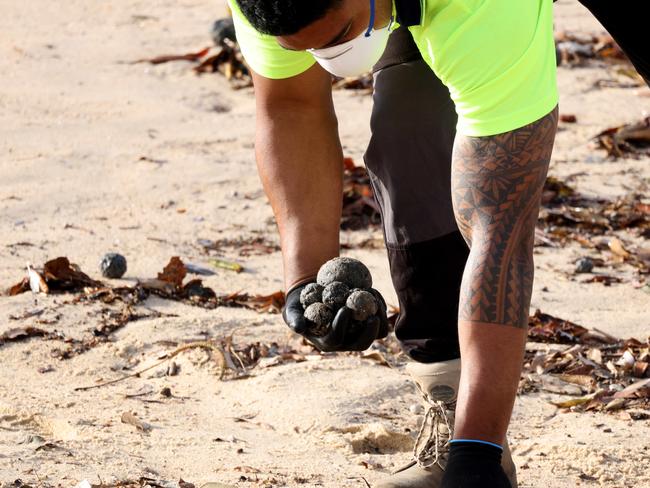
Randwick Mayor Dylan Parker said the council would continue to remove the material across all beaches.
“The safety of the community is our first priority. That’s why Council has taken the precaution to close these beaches while we undertake the safe collection and disposal of this material.
“We don’t yet know what has happened to produce the debris washing up on our beaches, but we will continue to work with relevant authorities to ensure the safety of the public and clean up our beaches.”
Preliminary results showed the material of the “unusual” spheres were “hydrocarbon based pollutant which is consistent with the makeup of tar balls”.
Clean-up efforts were launched on Wednesday to remove and safely dispose the debris from the popular beaches. The Mayor said council staff had been working with the NSW Environment Protection Agency, Ports Authority and Transport for NSW to assist in the clean-up response.
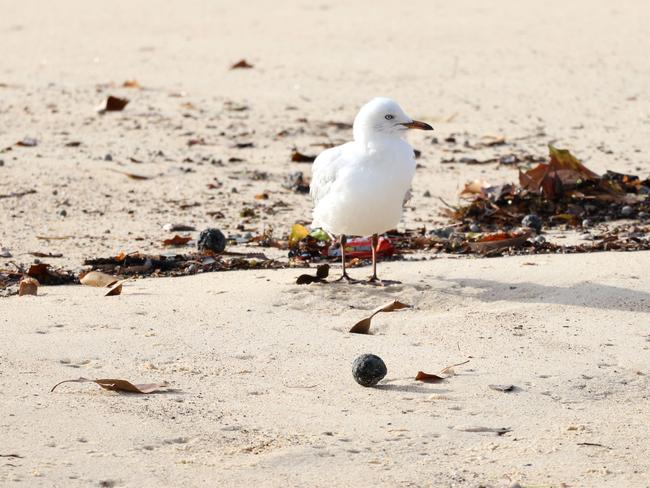
The clean-up process is expected to continue into Thursday, Mayor Parker advised.
“Our community is rightfully very protective of our natural environment and this has been a very concerning incident,” he said.
“We have engaged an expert occupational hygienist and a specialist waste removal contractor who are currently systematically removing the debris from the beaches in accordance with an agreed safe work method statement developed with the NSW EPA.”
He thanked the public for remaining off the beach while the tests and clean-up efforts continue.
Originally published as Sydney beaches allowed to reopen after tar balls testing


